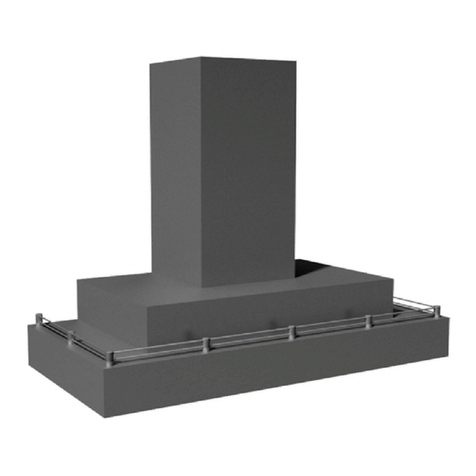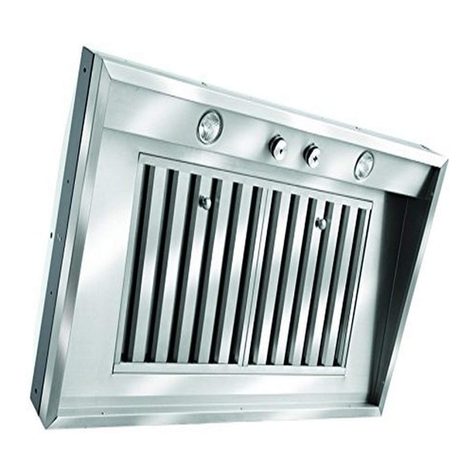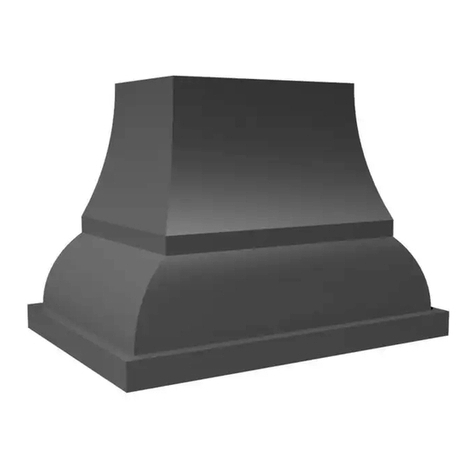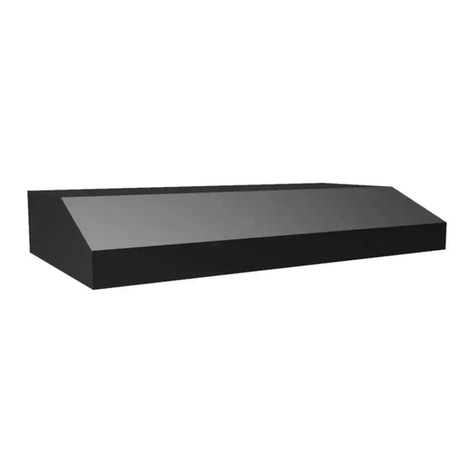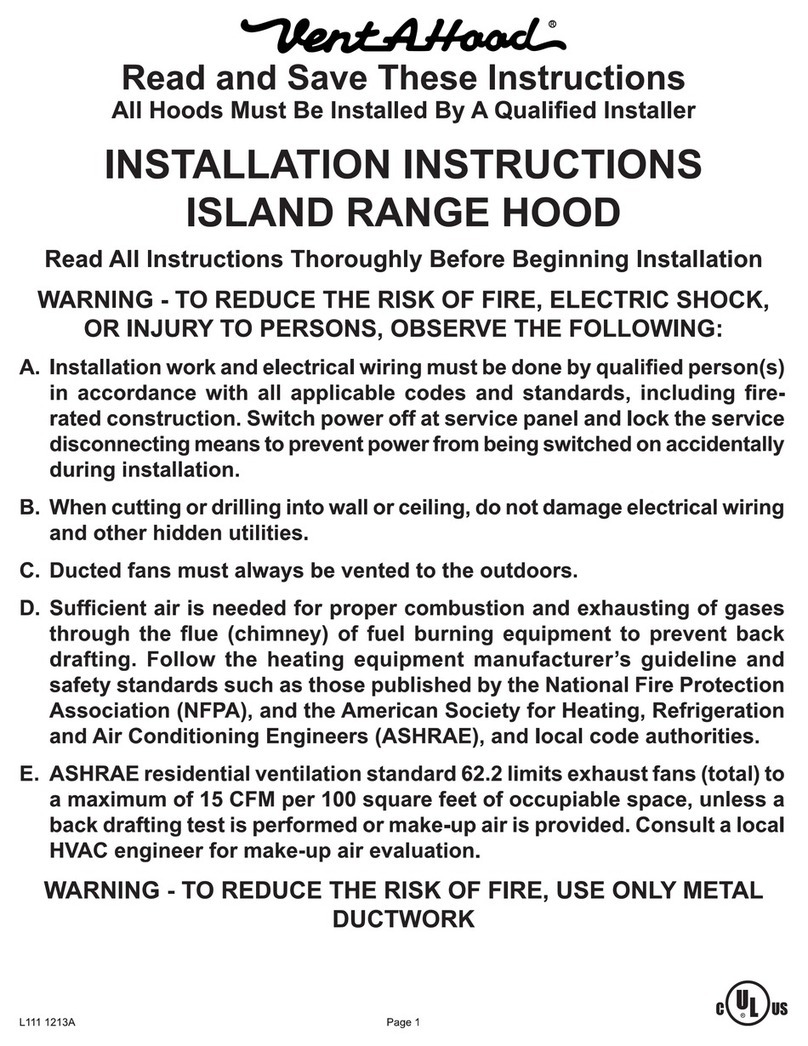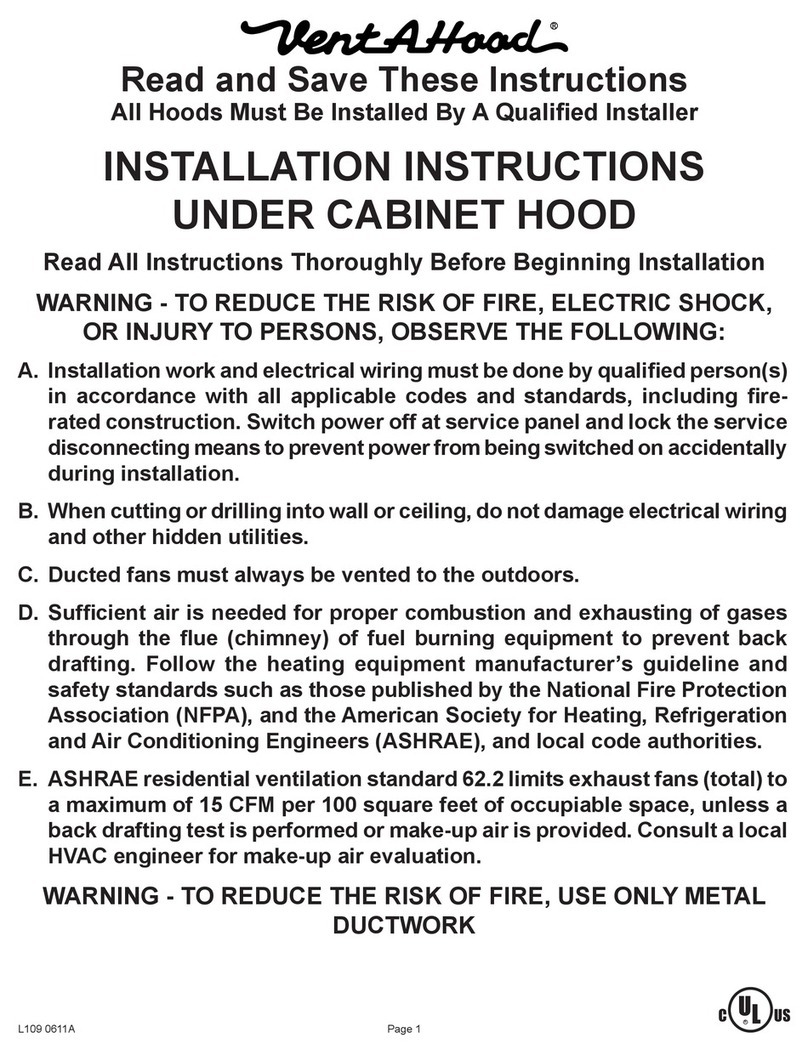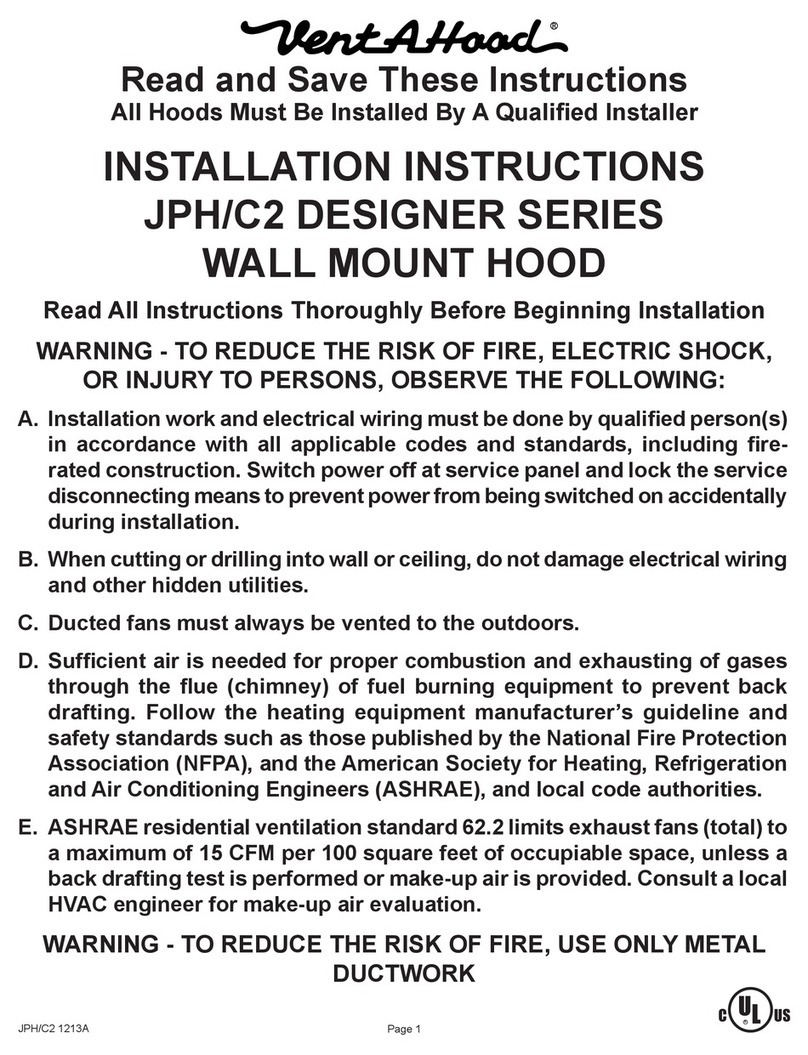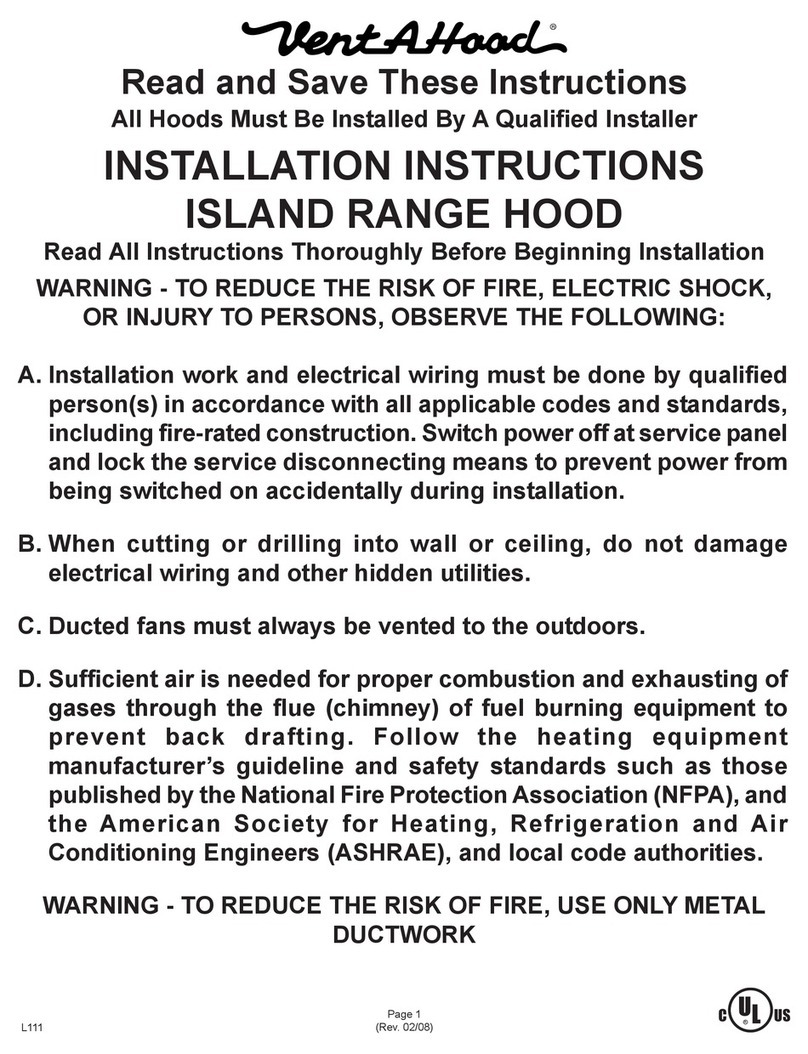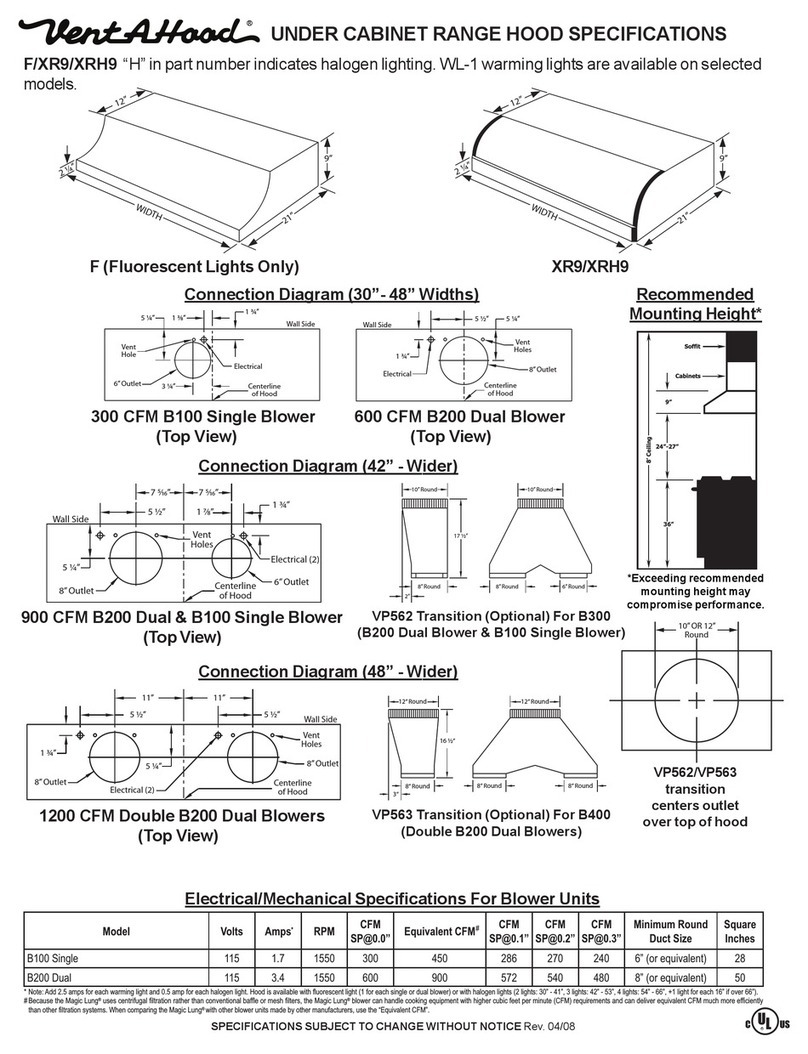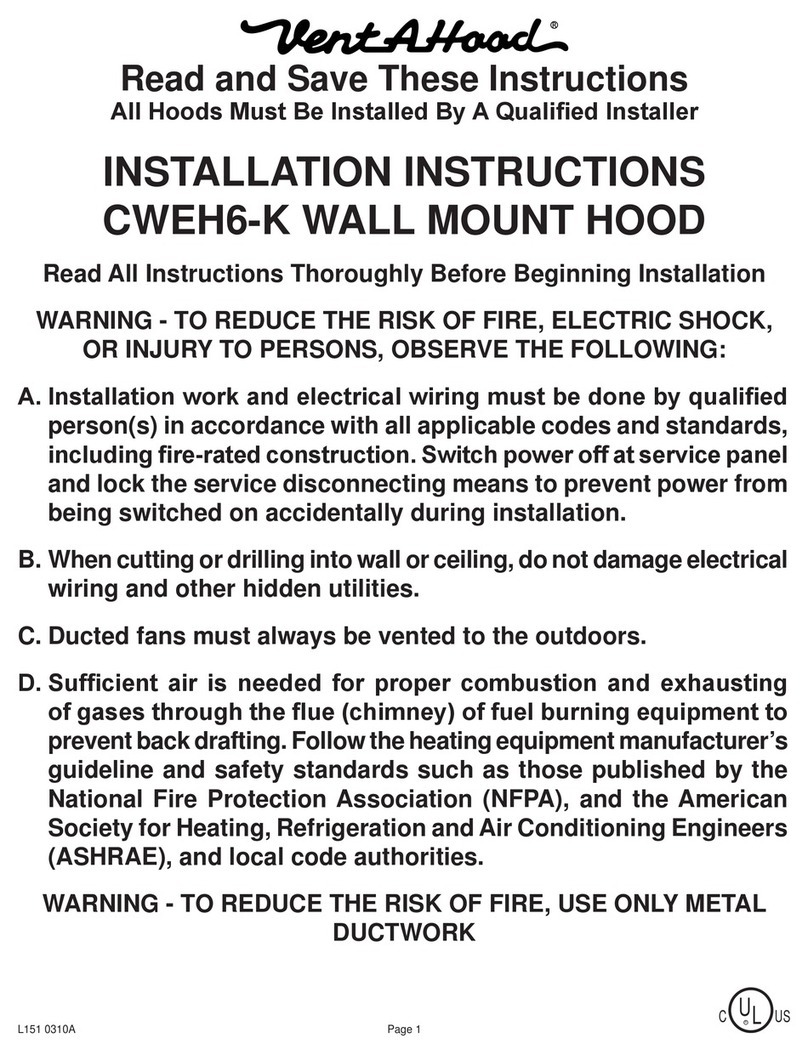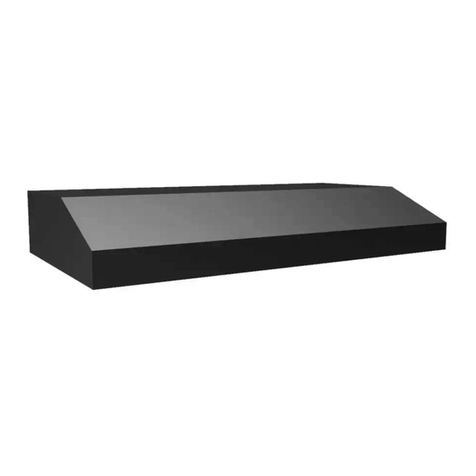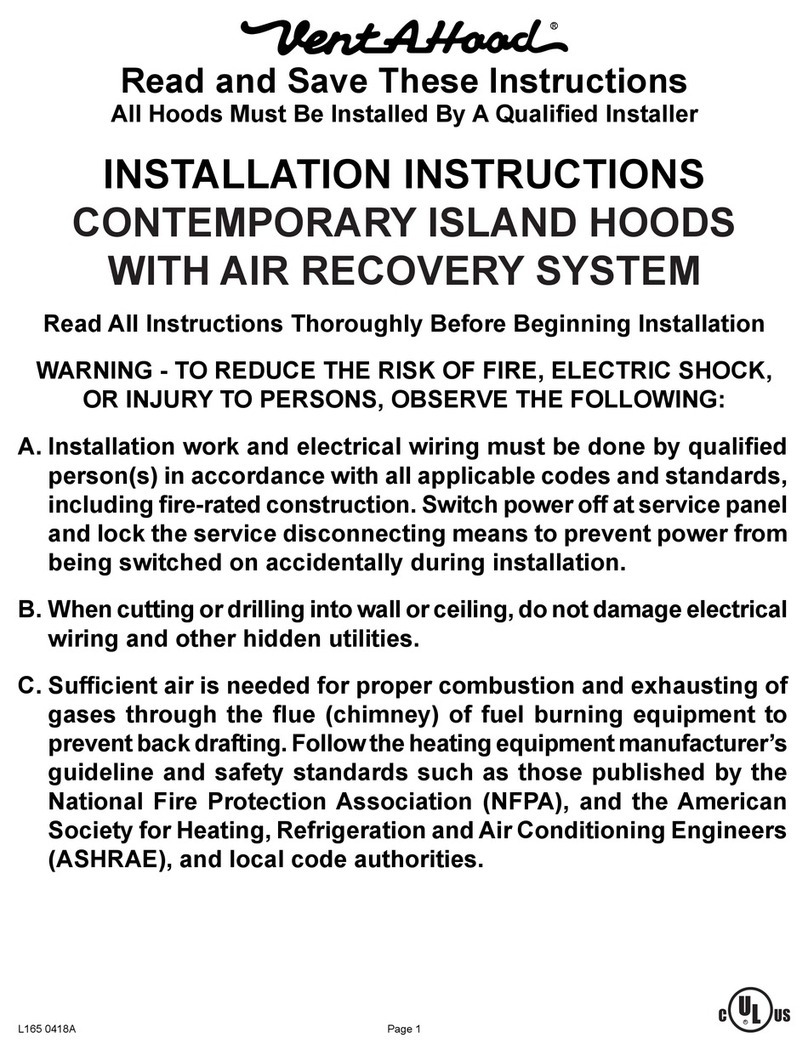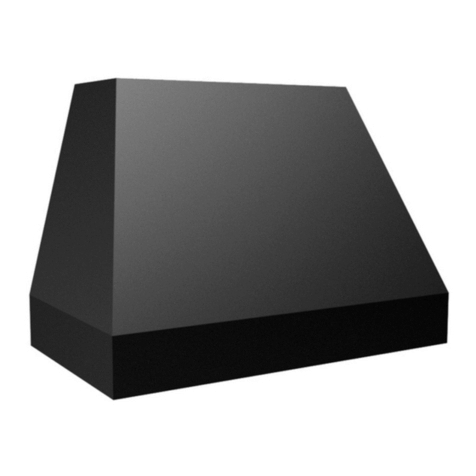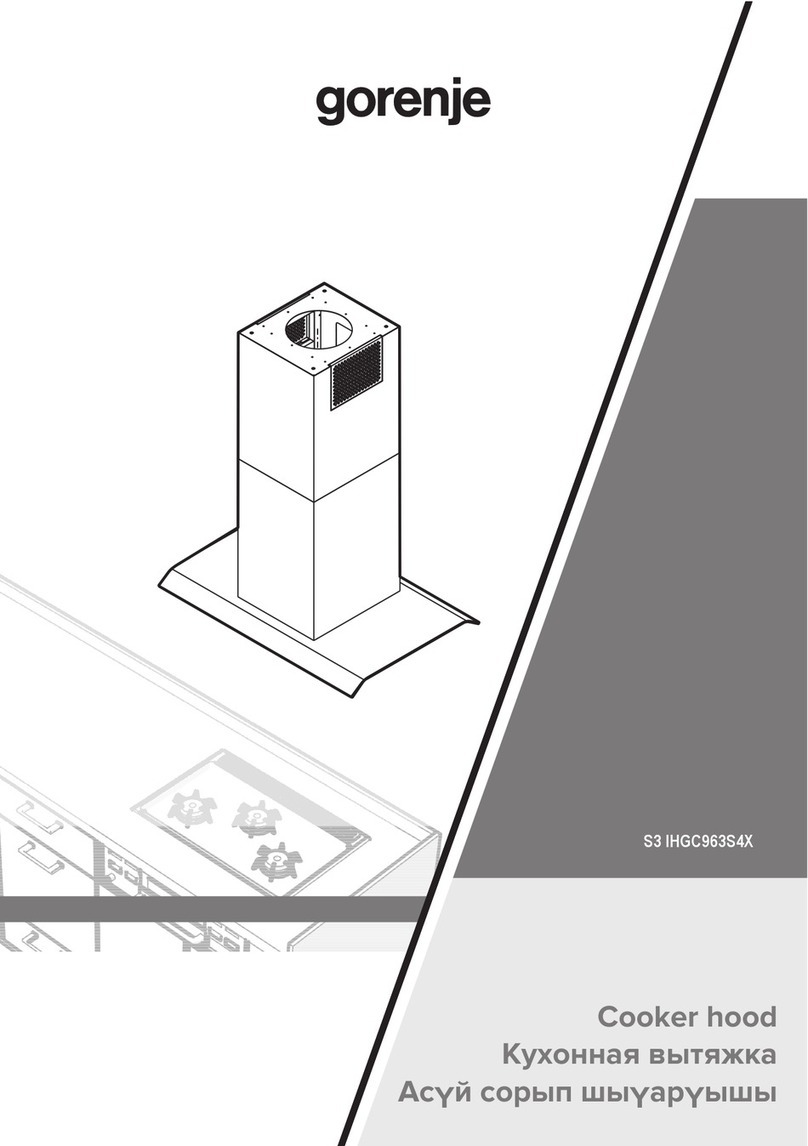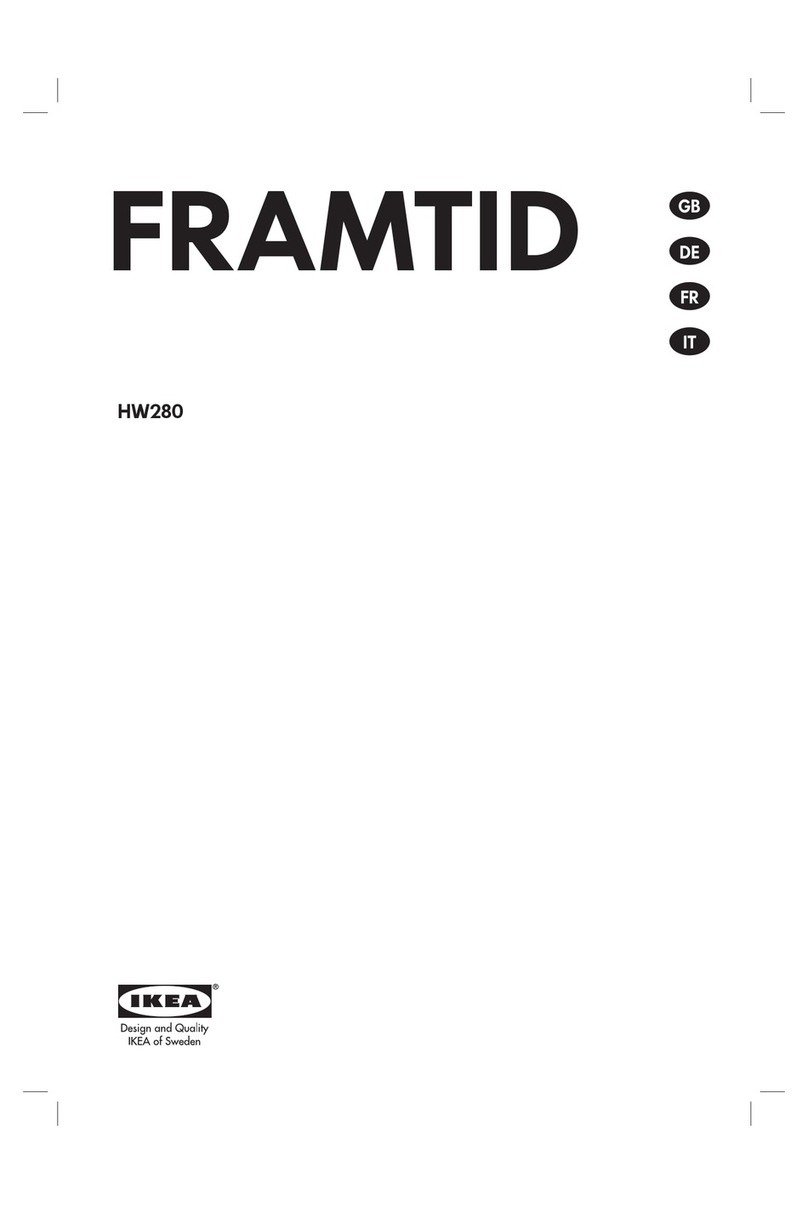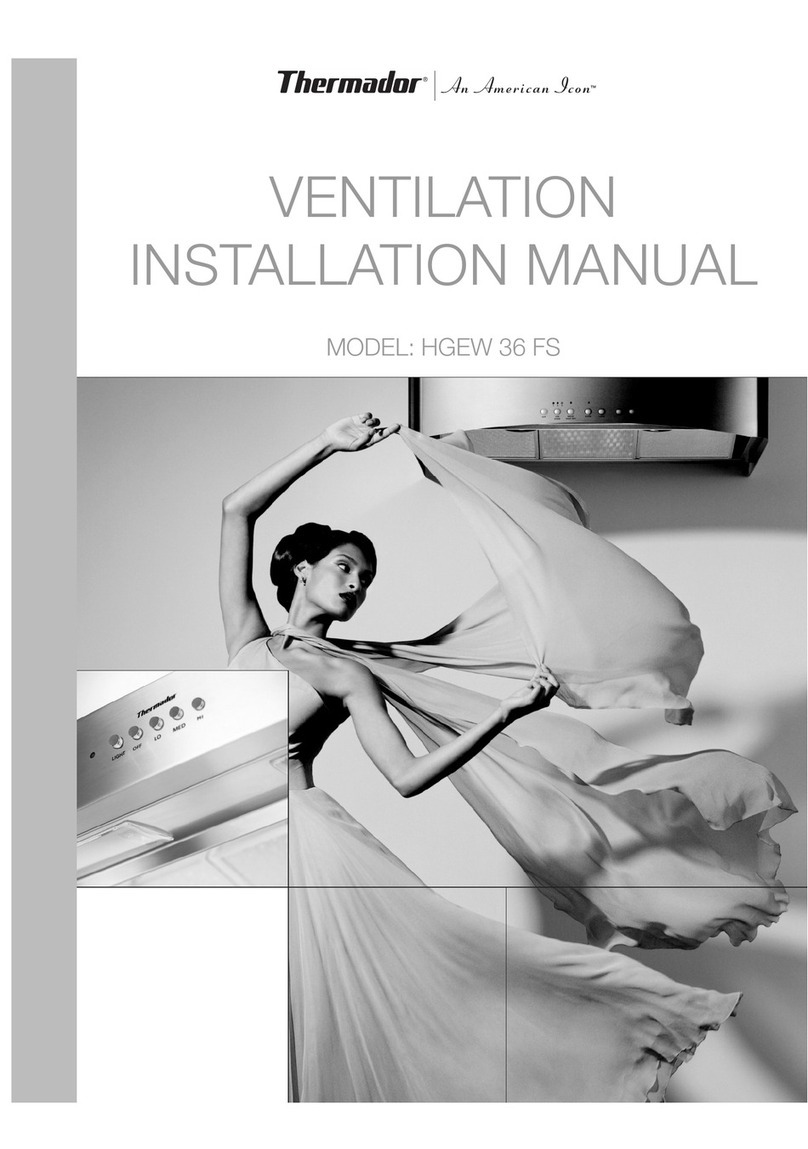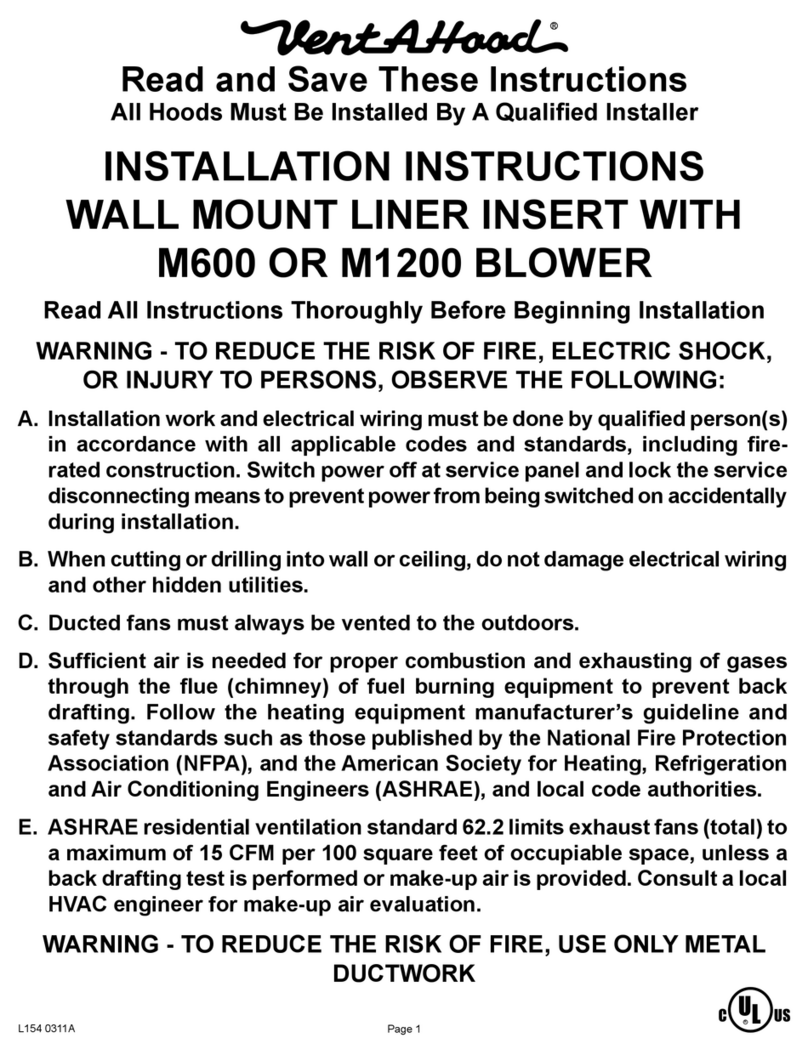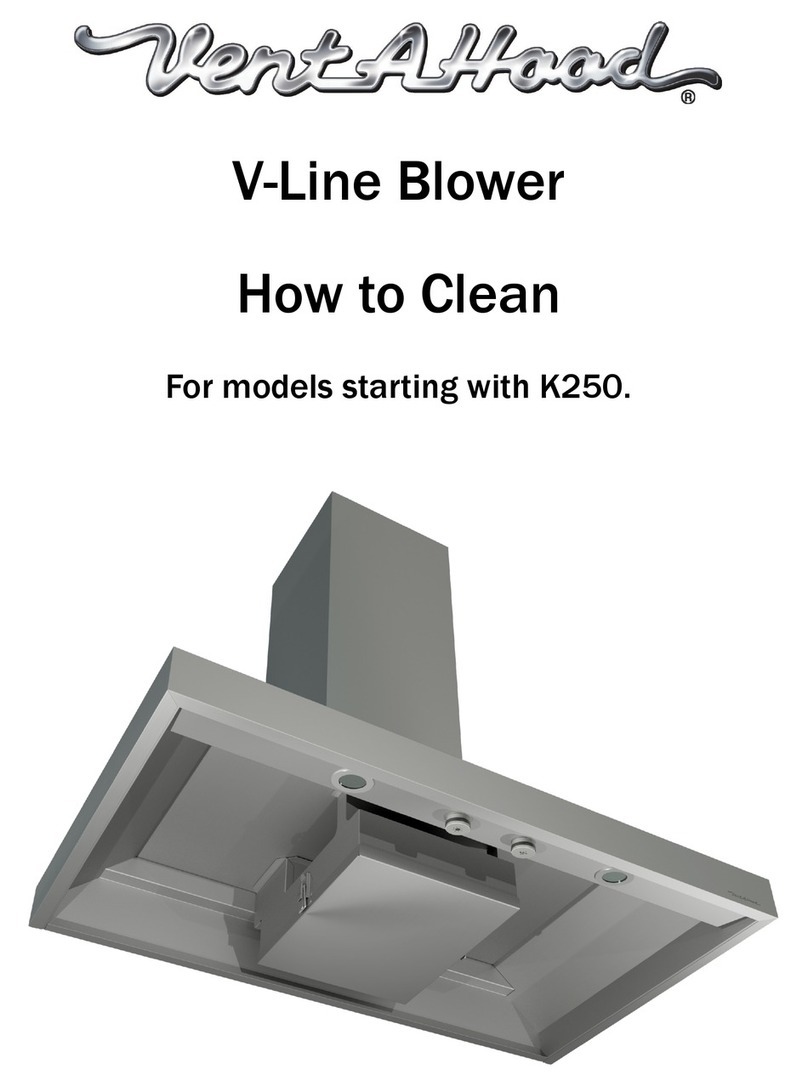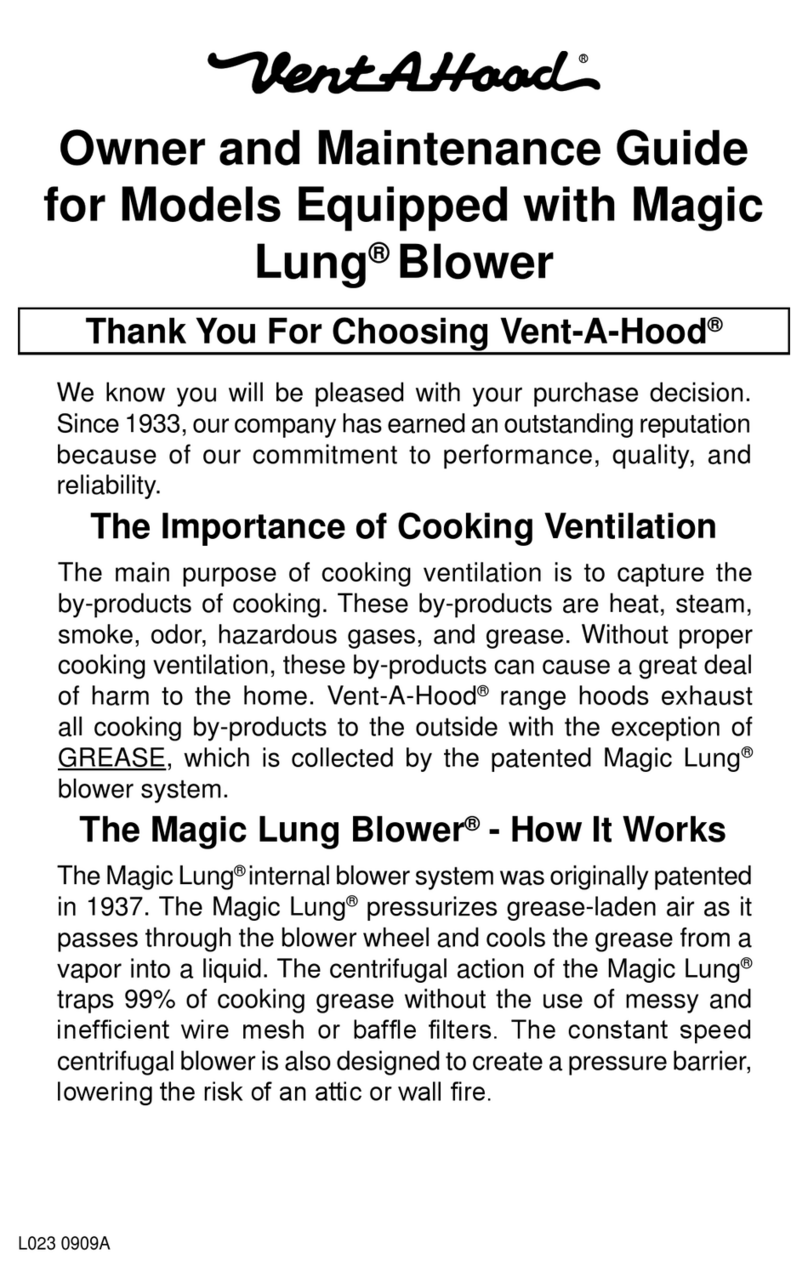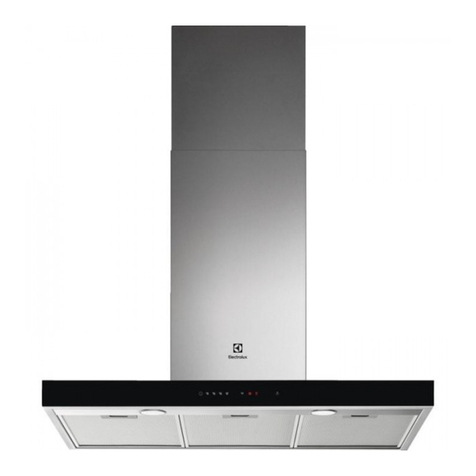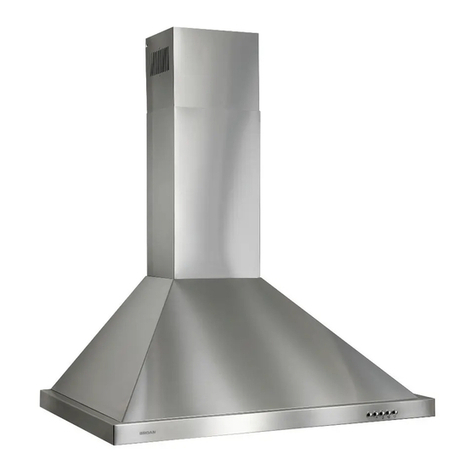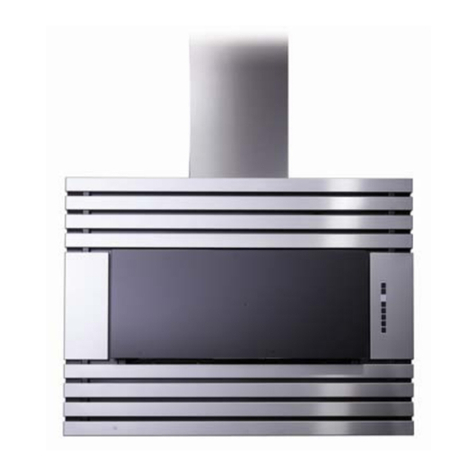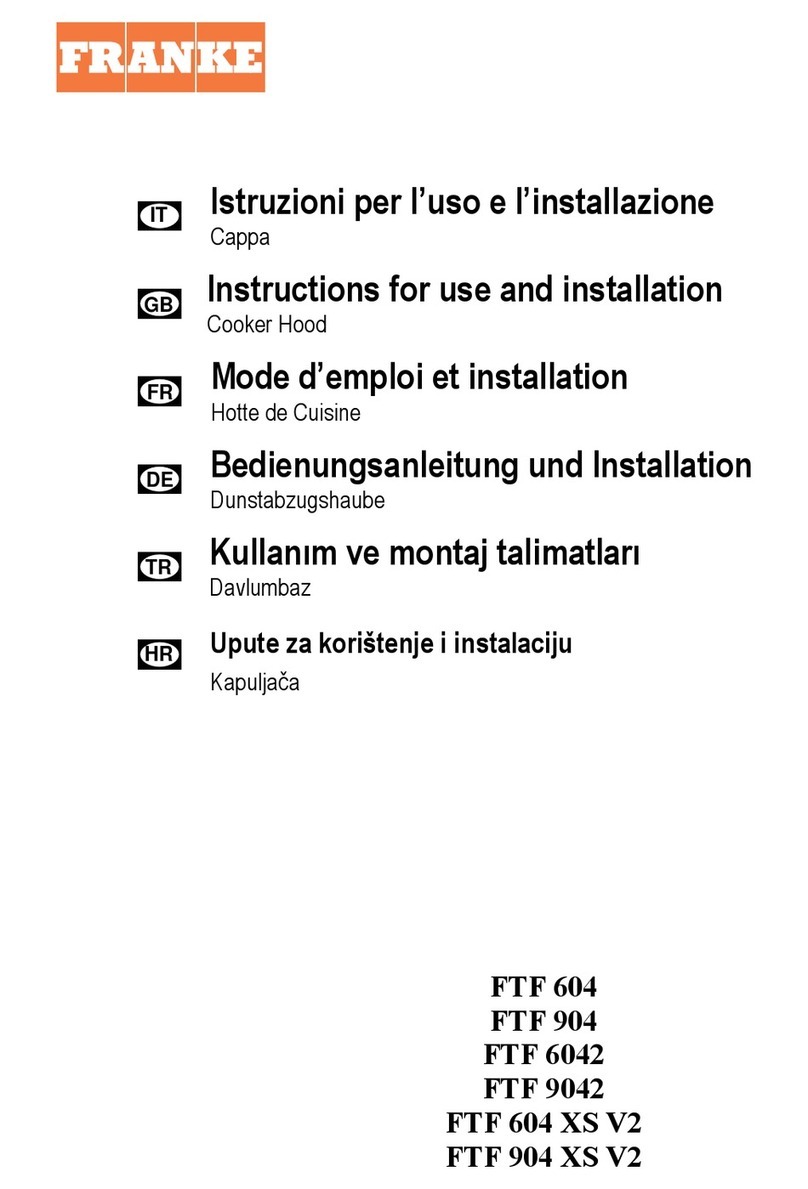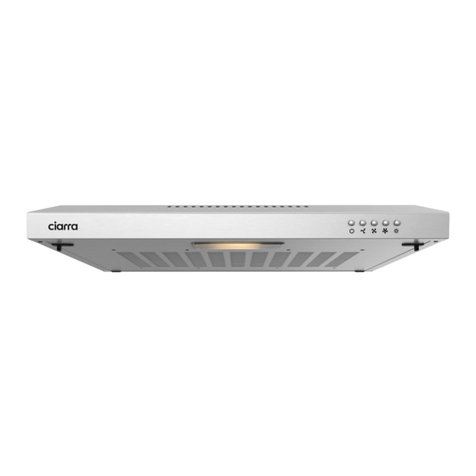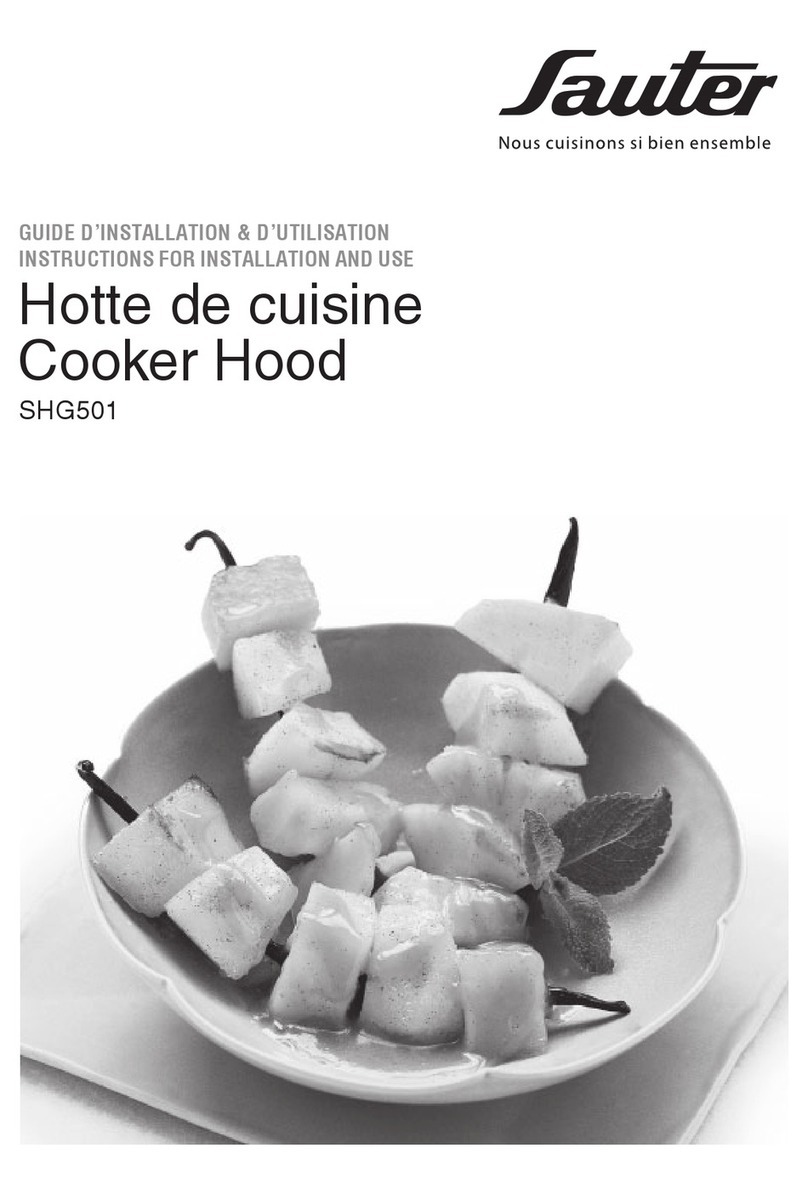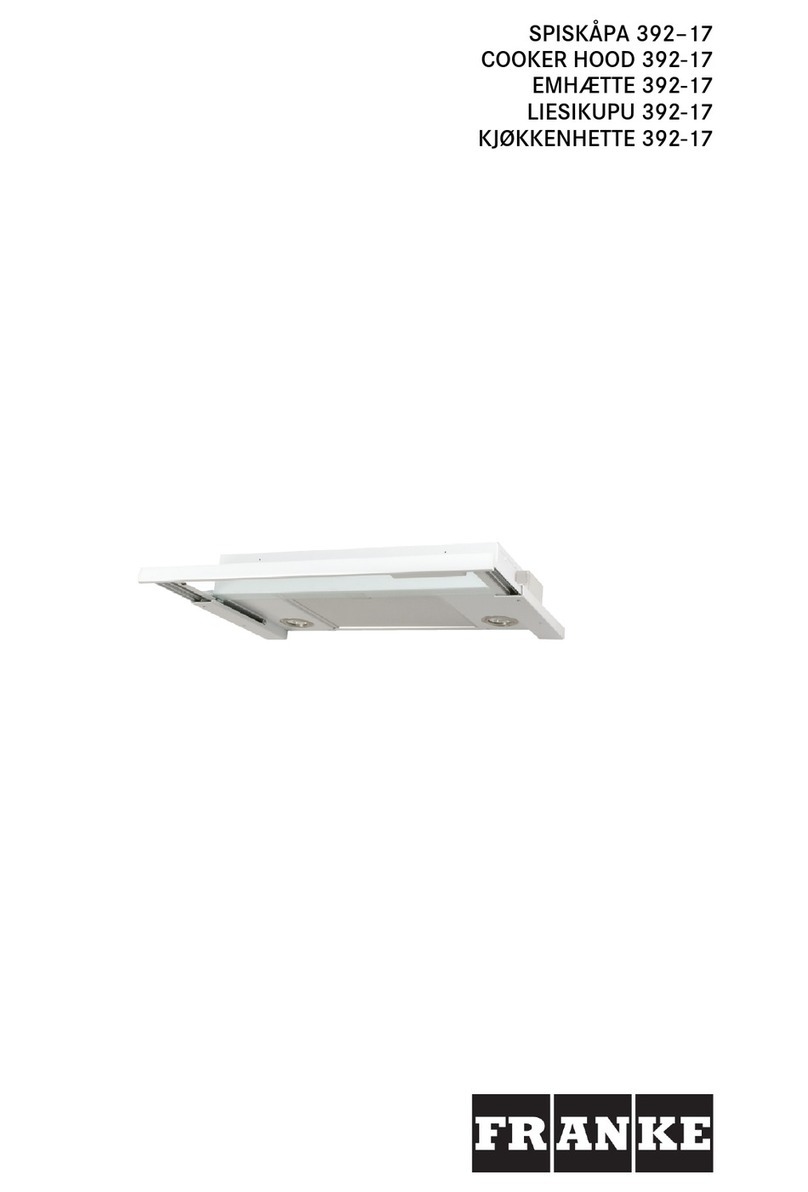
11)
12)
13)
14)
15)
16)
17)
18)
19)
Installation Details Continued
FOR BACK VENTING APPLICATIONS ONLY. IF NOT BACK VENTING, PROCEED DIRECTLY TO STEP 12.
Note: Wall studs may interfere with back venting installations. Additional framing may be required.
It is necessary to cut a duct access hole in the wall prior to installing the hood. To accomplish this, first remove
and set aside the duct cover that was previously installed in Step 8. Hold the hood on the mounting strip by
aligning the channel at the top of the back of the hood over the wood mounting strip on the wall. Place the
appropriate elbow(s) on top of the hood in line with the hood exhaust collar(s). On the wall, trace around the
elbow(s). Remove the hood and elbow(s) from the wall. Cut around the outside of the traced line(s), avoiding
wall studs. Install the duct from the outside of the home to the opening in the wall. Use duct tape to seal joints.
Place the duct cover back into the top of the hood and reattach to the hood.
Hang the hood on the mounting strip by aligning the channel at the top of the back of the hood over the wood
mounting strip on the wall. While holding the hood in place, mark locations on the mounting strip through the
two mounting holes in the channel at the top of the hood. Some mounting holes may be located behind the
blower(s). Remove hood and drill 3132" pilot holes at the center of marks in the wood strip to prevent splitting.
FOR BACK VENTING APPLICATIONS ONLY. IF NOT BACK VENTING, PROCEED DIRECTLY TO STEP 14.
Place the appropriate back vent elbow(s) on the top of the hood. Elbow(s) should be placed inside the collar(s)
of the exhaust outlet(s). Use duct tape to seal joint(s).
Insert the electrical wire from the service panel through the electrical wire clamp on each motor box.
Tighten the wire clamp(s).
Lift the hood into position while taking care to align the duct connection between the hood and the wall.
Secure the hood to the mounting strip by installing the screws (removed from the strip in Step 10) into the
pilot holes drilled in Step 12. Secure the slack in the electrical wire.
SKIP STEPS 14AND 15. PROCEED DIRECTLYTO STEP 16.
If applicable, install transition inside the exhaust collars and seal with duct tape. Insert the electrical wire from
the service panel through the electrical wire clamp(s) on each motor box. Tighten the wire clamp(s). Cut a
piece of duct the length of the duct cover allowing room for the transition on the top of the hood (if applicable).
If a transition is used, cut the duct to reach the transition outlet plus 1". This will allow the transition to engage
1" inside of the duct. See Page 3 for transition heights. One end of the duct must be crimped to fit inside the
duct in the ceiling. Insert non-crimped end over the transition or into the exhaust collar on top of the hood and
seal with duct tape.
Lift the hood into position while aligning the duct connection between the hood and the duct in the ceiling.
Secure the hood to the mounting strip by installing the screws (removed from the strip in Step 10) into the pilot
holes drilled in Step 12. Secure the slack in the electrical wire.
Using UL listed wire nuts, attach the "neutral" wire(s) to the white lead(s), the "hot" wire(s) to the black lead(s),
and the ground wire(s) to the green lead(s) inside the motor box(es).
I warning: Do not operate hood without proper ground connection.
Plug the motors into the hood and reinstall the blower motors using the three retaining screws that were
removed in Step 6.
Replace the blower housing(s) and the blower shield(s). Make sure the dampers open and close smoothly.
Refer to the Owner Maintenance Guide Operating Instructions for proper hood operation. Test all blower and
light functions to ensure they are operating properly.
Page 5
(Rev. 07/07)
